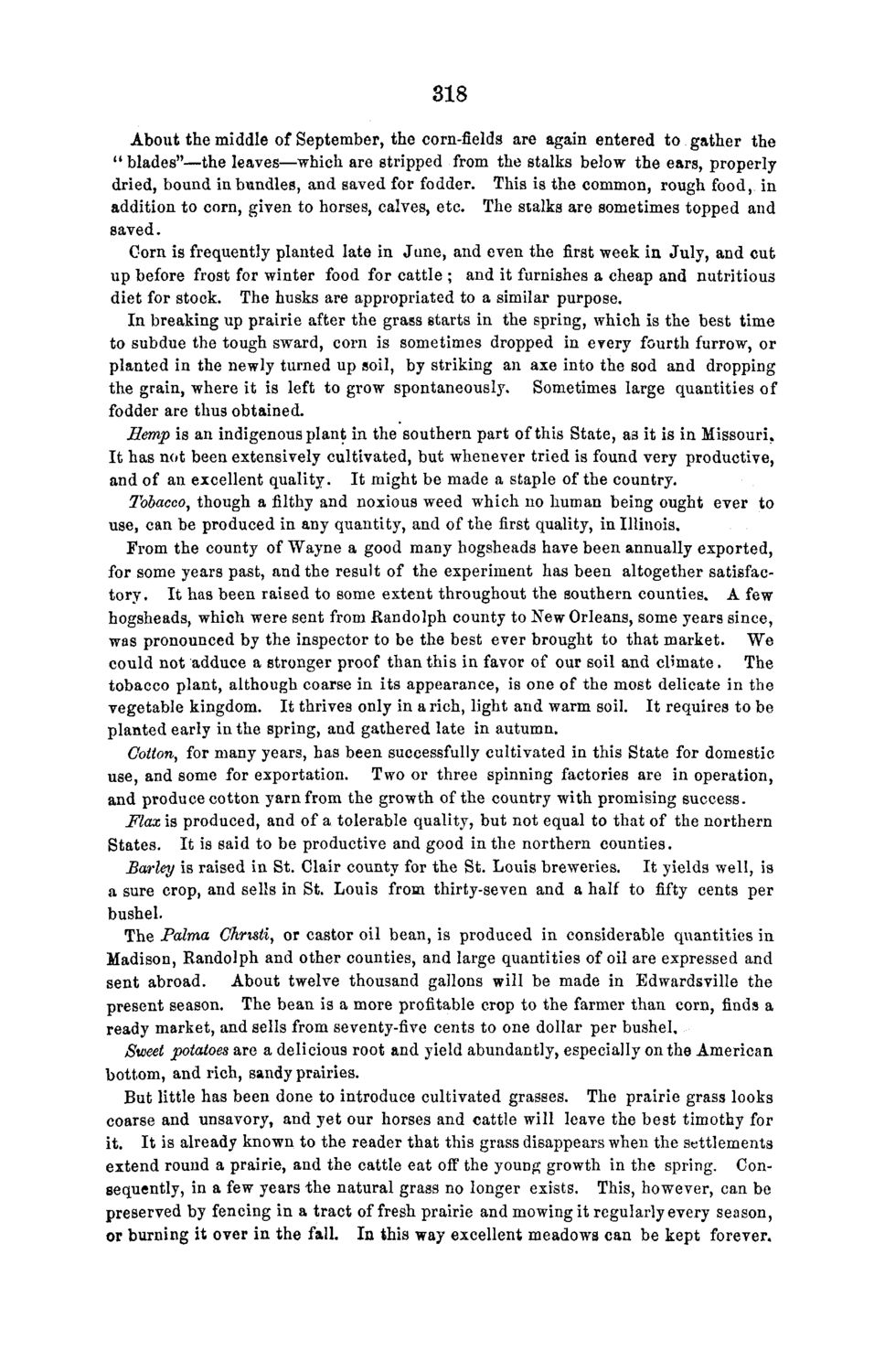| |
| |
Caption: Board of Trustees Minutes - 1868
This is a reduced-resolution page image for fast online browsing.

EXTRACTED TEXT FROM PAGE:
318 About the middle of September, the corn-fields are again entered to gather the "blades"—the leaves—which are stripped from the stalks below the ears, properly dried, bound in bundles, and saved for fodder. This is the common, rough food, in addition to corn, given to horses, calves, etc. The stalks are sometimes topped and saved. Corn is frequently planted late in Jane, and even the first week in July, and cut up before frost for winter food for cattle ; and it furnishes a cheap and nutritious diet for stock. The husks are appropriated to a similar purpose. In breaking up prairie after the grass starts in the spring, which is the best time to subdue the tough sward, corn is sometimes dropped in every fourth furrow, or planted in the newly turned up soil, by striking an axe into the sod and dropping the grain, where it is left to grow spontaneously. Sometimes large quantities of fodder are thus obtained. Hemp is an indigenous plant in the southern part of this State, as it is in Missouri. It has not been extensively cultivated, but whenever tried is found very productive, and of an excellent quality. It might be made a staple of the country. Tobacco, though a filthy and noxious weed which no human being ought ever to use, can be produced in any quantity, and of the first quality, in Illinois. From the county of "Wayne a good many hogsheads have been annually exported, for some years past, and the result of the experiment has been altogether satisfactory. It has been raised to some extent throughout the southern counties, A few hogsheads, which were sent from Bandolph county to New Orleans, some years since, was pronounced by the inspector to be the best ever brought to that market. We could not adduce a stronger proof than this in favor of our soil and climate. The tobacco plant, although coarse in its appearance, is one of the most delicate in the vegetable kingdom. It thrives only in a rich, light and warm soil. It requires to be planted early in the spring, and gathered late in autumn. Cotton, for many years, has been successfully cultivated in this State for domestic use, and some for exportation. Two or three spinning factories are in operation, and produce cotton yarn from the growth of the country with promising success. Flax is produced, and of a tolerable quality, but not equal to that of the northern States. It is said to be productive and good in the northern counties. Barley is raised in St. Clair county for the St. Louis breweries. It yields well, is a sure crop, and sells in St. Louis from thirty-seven and a half to fifty cents per bushel. The Palma Christi, or castor oil bean, is produced in considerable quantities in Madison, Randolph and other counties, and large quantities of oil are expressed and sent abroad. About twelve thousand gallons will be made in Edwardsville the present season. The bean is a more profitable crop to the farmer than corn, finds a ready market, and sells from seventy-five cents to one dollar per bushel. Sweet potatoes are a delicious root and yield abundantly, especially on the American bottom, and rich, sandy prairies. But little has been done to introduce cultivated grasses. The prairie grass looks coarse and unsavory, and yet our horses and cattle will leave the best timothy for it. It is already known to the reader that this grass disappears when the settlements extend round a prairie, and the cattle eat off the young growth in the spring. Consequently, in a few years the natural grass no longer exists. This, however, can be preserved by fencing in a tract of fresh prairie and mowing it regularly every season, or burning it over in the fall. In this way excellent meadows can be kept forever.
| |